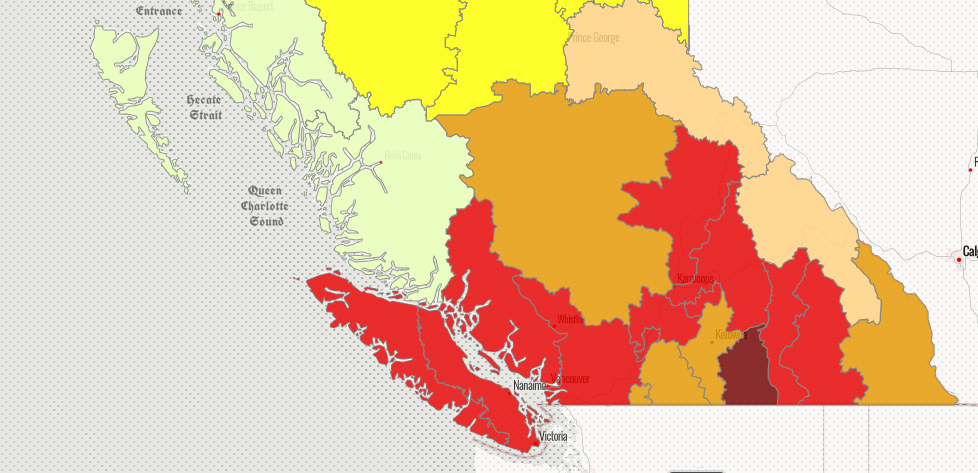As southern B.C.’s drought worsens, the province is asking you to do your part to preserve water.
While some areas in northern B.C. have already received healthy showers, the brief rainstorm we enjoyed on Saturday did little to alleviate the water scarcity issue on Vancouver Island and the Sunshine Coast.
Areas under Drought Level 4 now include:
- the Vancouver Island basins and Gulf Islands.
- the North and South Thompson basins, as well as the Salmon River, Coldwater River and Nicola River watersheds in the Thompson Okanagan region;
- the Lower Columbia and West Kootenay basins; and
- the Lower Mainland and South Coast basins.
The only area under Drought Level 5 is the Kettle Basin located in the Kootenay region, where adverse impacts are almost certain.
In these areas, adverse impacts of drought on people, fish or ecosystems are likely.
Regions under Drought Level 3 include the entire Okanagan Valley, Similkameen, Cariboo/Chilcotin, the East Kootenay Basin and Skagit watershed.
Of note, several local streams in the Okanagan, Similkameen and Cariboo/Chilcotin areas are experiencing greater impacts.
Ten other watershed basins in B.C. are either under Drought Level 2 or Drought Level 1. B.C. ranks drought levels from 0 to 5. Drought Level 5 is the most severe, with adverse impacts to socioeconomic or ecosystem values almost certain.
Water used to extinguish a fire or contain and control the spread of a fire remains exempt from a provincial water licence or approval. However, people under an evacuation order due to wildfire must leave the area immediately.
To lessen the impact on fish habitat, many freshwater angling closures are in place throughout B.C. due to increased stress to fish from low flows and high-water temperatures.
The province says the unseasonable heat and dry conditions forecast mid-week and lasting through the weekend will only make things worse.
Voluntary reduction of water usage, from surface and groundwater in southern B.C., is encouraged.
Voluntary water reduction already implemented in some areas has helped slow down drought conditions and the need for more water restrictions.
However, you’re being asked to reduce your water use wherever possible and observe all local watering restrictions.
If conservation measures don’t work and the drought continues, the province says regulatory action may be taken under the Water Sustainability Act.
This includes temporary protection orders issued to water licensees to avoid significant or irreversible harm to aquatic ecosystems.
Provincial staff are actively monitoring the situation and working to balance water uses with environmental flow needs.
As the hot and dry summer continues, the province is offering tips to preserve water:
At home:
- Limit outdoor watering.
- Do not water during the heat of the day or when it is windy.
- Consider planting drought-tolerant vegetation.
- Take shorter showers.
- Do not leave taps running.
- Install water-efficient showerheads, taps and toilets.
On the farm:
- Implement an irrigation scheduling program using real-time weather data.
- Schedule irrigation to match crop needs and soil storage capacity.
- Improve water system efficiencies and check for leaks.
- Focus on high-value crops and livestock.
Industry:
- Reduce non-essential water use.
- Recycle water used in industrial operations.
- Use water-efficient methods and equipment.




